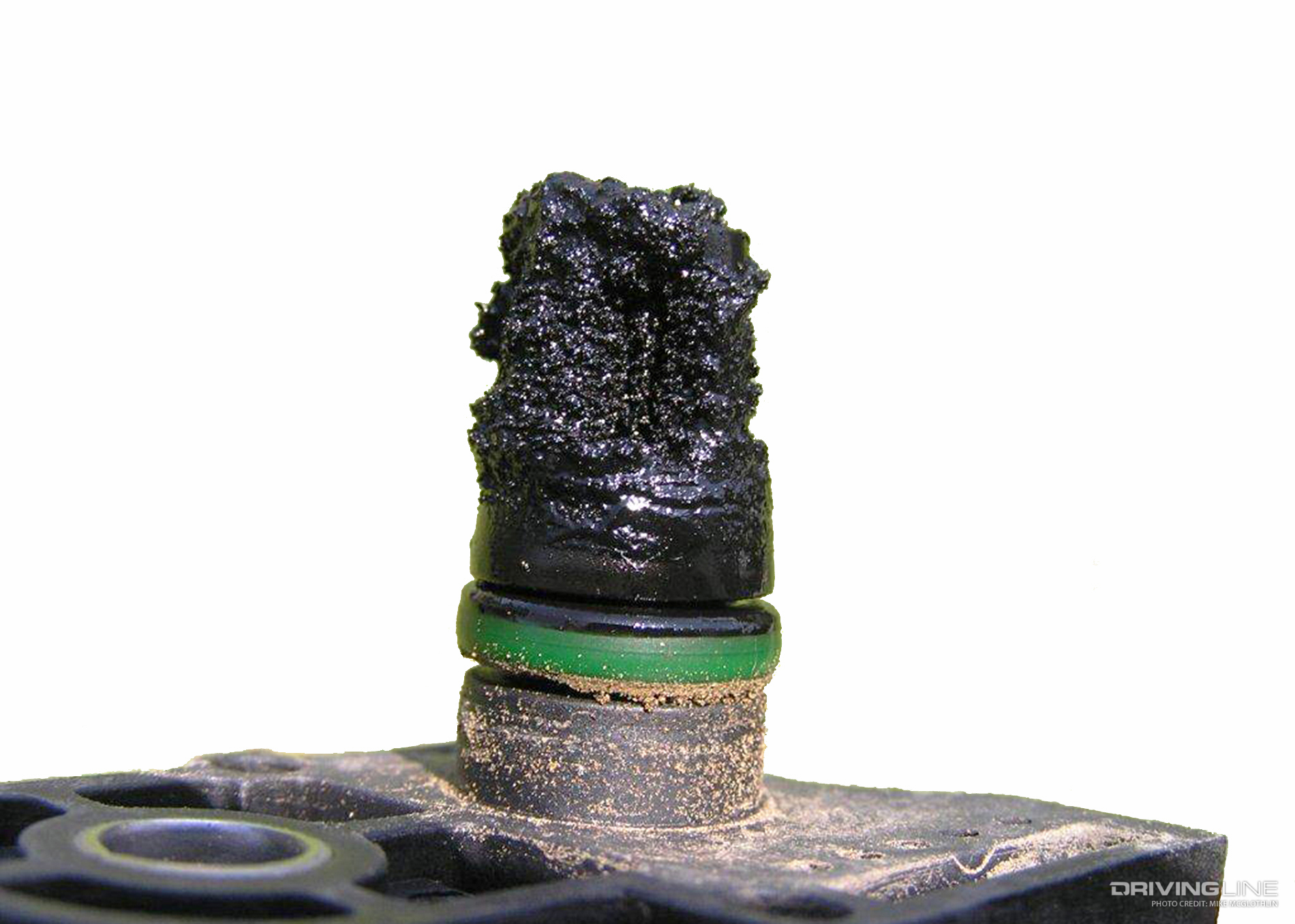EGR stands for exhaust gas recirculation. It’s used as a means of keeping nitrogen oxides (NOx) and hydrocarbon emissions down, and it does so by diluting the amount of fresh oxygen making its way into the combustion chamber with cooled exhaust gases.
While “cooled” exhaust gas might not sound bad, diesel engines benefit tremendously from heat. When taking some of that in-cylinder heat away (i.e. utilizing EGR), NOx and hydrocarbon pollutants are reduced, but it comes at the expense of decreased engine performance and efficiency.
Without EGR, hotter combustion temperatures would produce a more complete burn (meaning less particulate matter), but would in turn lead to excessive NOx production. Ultimately, EGR is here to stay.
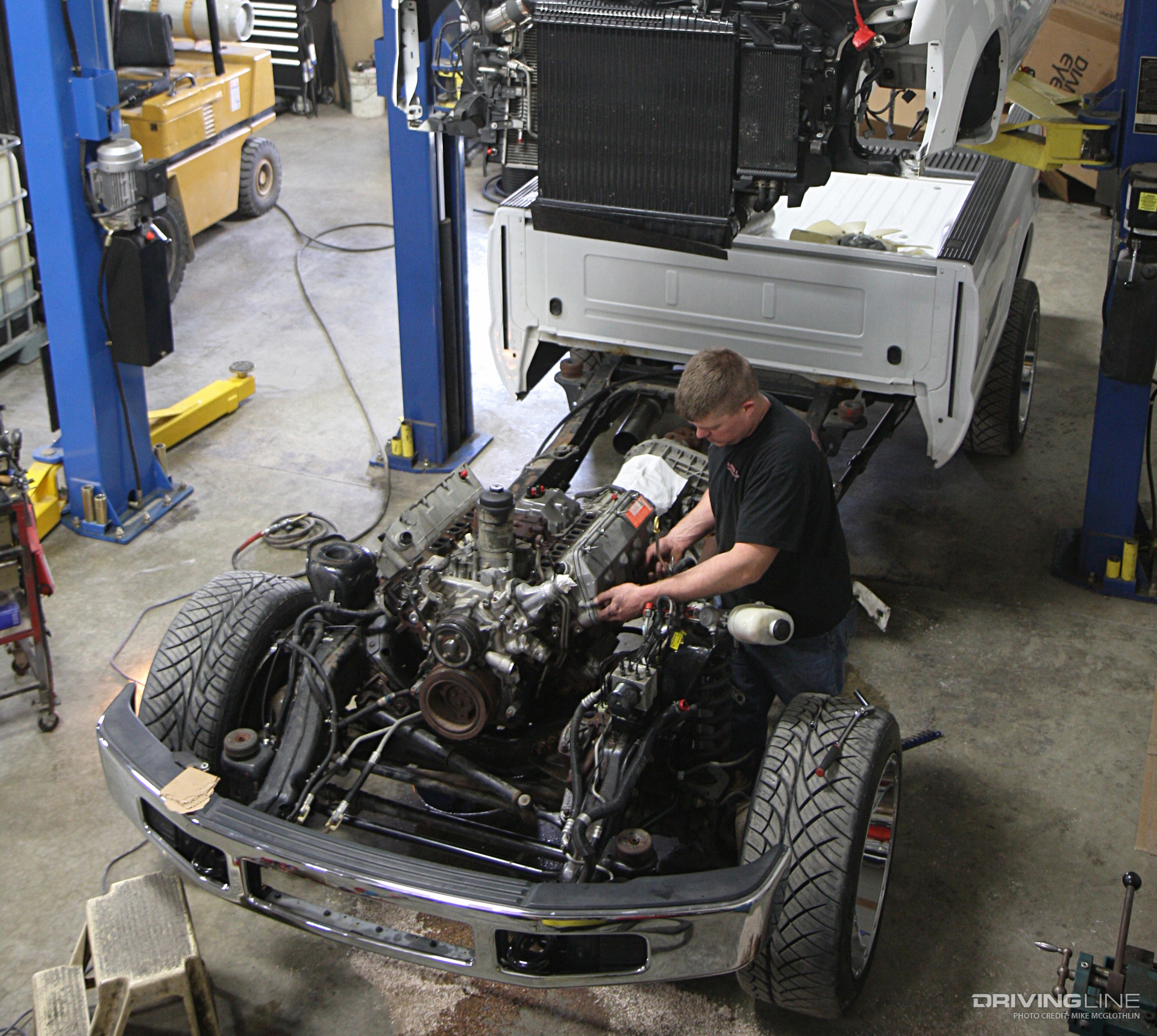
Let's take a closer look at the types of problems this necessary evil is notorious for causing in the current crop of diesel engines:
How It Works
Exhaust gases are reintroduced into the intake stream via a provision in the exhaust manifold that allows exhaust to flow into a fluid-to-air heat exchanger known as an EGR cooler. This cooler is responsible for lowering the temperature of the exhaust gases that pass through it (which can be anywhere from 400 to 1,400 degrees F). To dissipate this extreme heat, coolant flows through the EGR cooler.
Once through the cooler, exhaust gases are routed to the EGR valve, which is commanded to open and close by the engine’s computer in order to effectively meter the amount of exhaust that is allowed to reenter the intake tract.
The Problem
Exhaust gas recirculation’s ill-effects begin with soot-laced exhaust flow mixing with oil vapor from the close crankcase ventilation system. This leads to carbon buildup forming at the point of origin, and carrying on all the way to the intake ports of the cylinder head(s).
On top of that, the contaminants that make it in-cylinder and past the piston rings end up in the engine oil. So not only does EGR hamper performance by coating and then shrinking the size of the intake path, but it is also hard on engine oil, and even degrades the coolant that is used to cool off the exhaust gases passing through the EGR cooler.
EGR Valve Carbon Buildup
Carbon buildup isn’t uncommon after a few years’ worth of service from an EGR-equipped diesel. This gummed up EGR valve was pulled off a 200,000-mile ’99.5-’03 Volkswagen Jetta TDI.
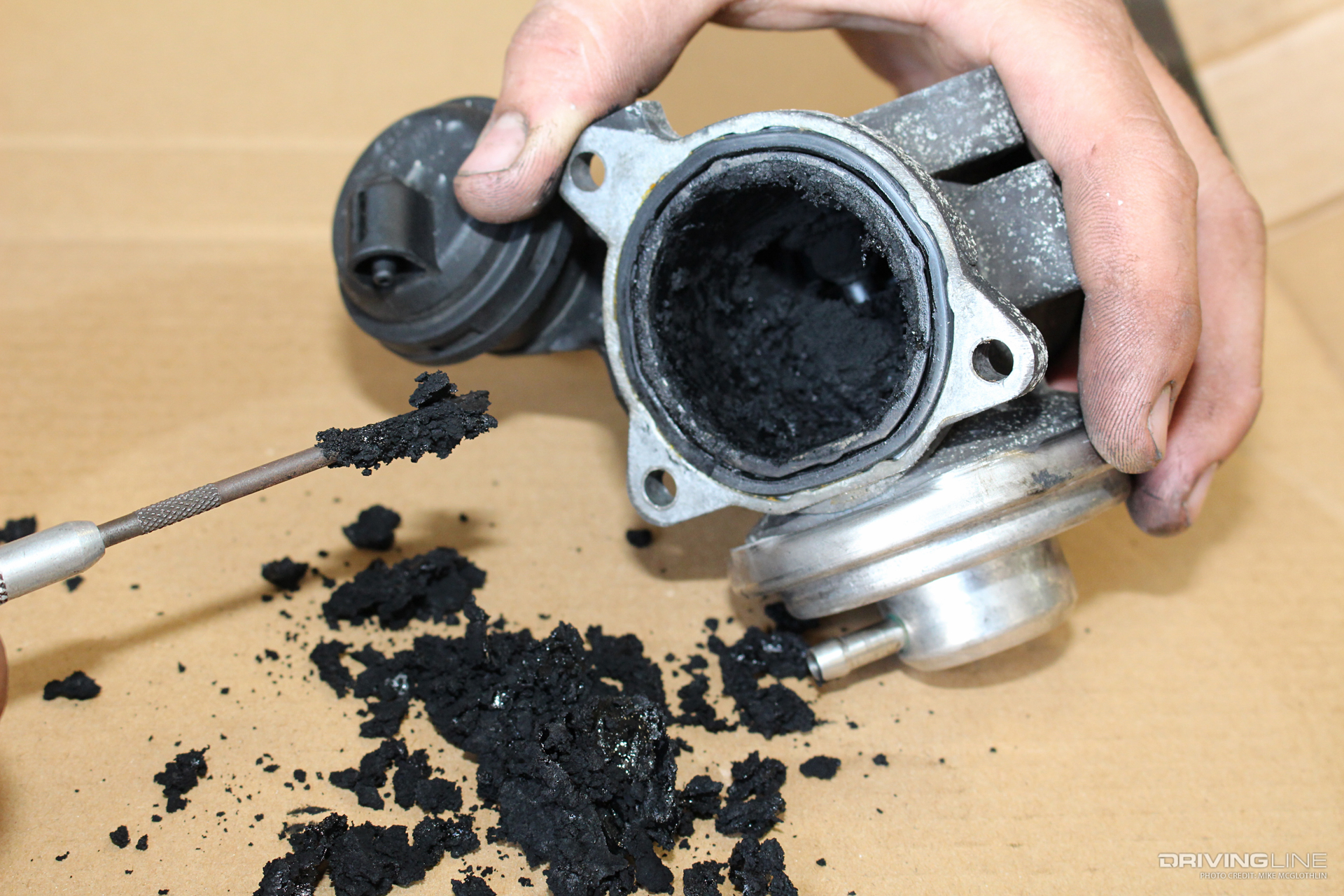
The fact that the car was highway driven proved to be its saving grace, because EGR is typically most active when an engine idles or is subjected to short trip driving (for warm up or maintaining engine warmth). On cars that spend their entire life making quick back-and-forth trips with extended periods of idling mixed in, the buildup is much worse. We’ve seen “city versions” of this same component not even allow daylight to make it through them, which restricts the engine so much that the accelerator has to be pinned to the floorboard to get the car moving.
6.0L Power Stroke's EGR Cooler
Try cooling off 1,000+ degree exhaust gases in about 12 inches of travel, and you get an idea of what the factory EGR cooler on a 6.0L Power Stroke has to put up with on a regular basis.

The 6.0L’s EGR cooler is notorious for rupturing (usually at its center section), which allows coolant to flow into the intake or exhaust. Catastrophic EGR cooler failures allow exhaust pressure into the cooling system, which can eventually lead to a blown head gasket. We’ll note that ’04-’07 EGR coolers are more prone to plugging, given their square design (compared to the circular ’03 model coolers, which were less prone to plugging up).
6.0L Power Stroke's EGR Valve
On paper, the 6.0L Power Stroke’s EGR valve should work fine. It sits at the front of the intake manifold and allows cooled exhaust gases to join incoming boost on its path toward the cylinder heads. In the real world, it’s infamous for plugging up, sometimes within as little as 20,000 miles. When this happens, the valve will begin to stick, causing low power, hesitation and smoky conditions. Regular cleaning of the EGR valve is highly recommended for 6.0L owners looking for maximum longevity. Here we see a dirty EGR valve next to a freshly cleaned unit.

6.4L Power Stroke's Dual EGR Coolers
Obviously, Ford and Navistar learned a thing or two from the 6.0L Power Stroke’s inadequate EGR system. You’ll notice that dual EGR coolers are employed on the 6.4L Power Stroke (vs. one on the 6.0L), along with a much stronger DC motor activating the EGR valve and an EGR oxidation catalyst also present on the engine.

Another improvement on the 6.4L’s system is that the EGR coolers are plumbed in parallel with the cooling system. Of all the big three diesel offerings, the Power Stroke (Ford) and 6.7L Cummins (Ram) engines see the most EGR-related issues. The EGR system found on GM’s 6.6L Duramax has proven to be the most reliable thus far, but by no means is it bulletproof. (But it is possible... Find out how to make your Duramax diesel engine bulletproof.)
6.7L Cummins' EGR Valve
Although it’s known for being one of the most robust engines to ever grace the ¾-ton and 1-ton truck segment, even the 6.7L Cummins has its fair share of EGR gremlins. The weakest link in the 6.7L Cummins’ EGR system lies in its EGR valve.
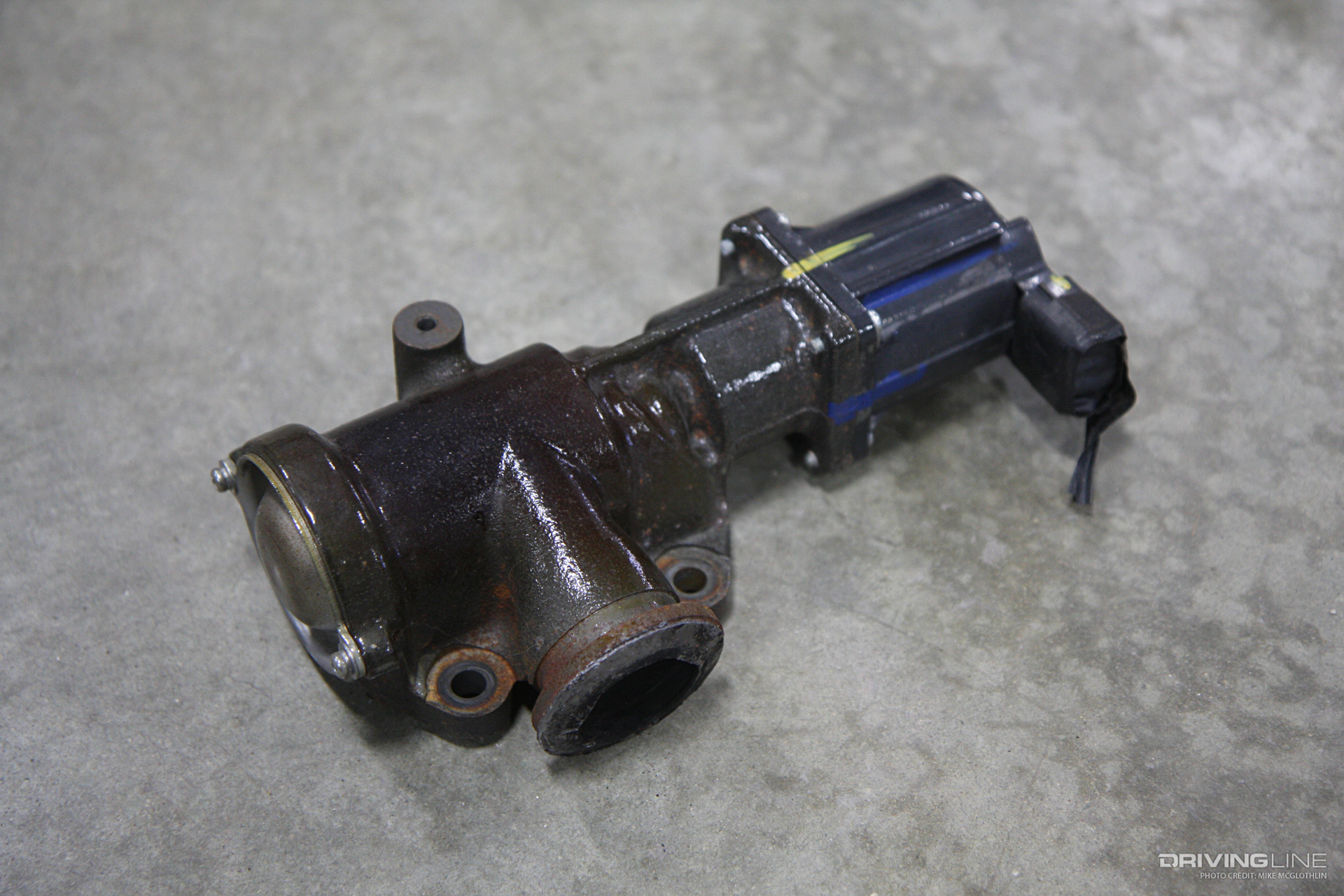
The spring loaded, solenoid activated valve is prone to gumming up and sticking just like other valves used in the competition’s engines. However, most late-model Ram 2500 and 3500 owners aren’t aware that Cummins specifies a 67,500-mile cleaning interval for both the EGR valve and EGR cooler. Ironically enough, most EGR-related issues surface after the 70,000-mile mark in most Ram pickups, so if this maintenance is performed at the appropriate time, much of the 6.7L Cummins’ EGR issues can be avoided.
6.7L Cummins' EGR Cooler
While EGR valve issues are much more common, EGR cooler failures do happen on 6.7L Cummins mills. However, it’s not all doom and gloom for the coveted inline-six. Not only is the EGR cooler easier to get to than on the competition’s V-8 power plants, but owners of ’07.5-present Ram trucks should take comfort in knowing that today’s engines are designed to live in a dirty, EGR-laced environment.
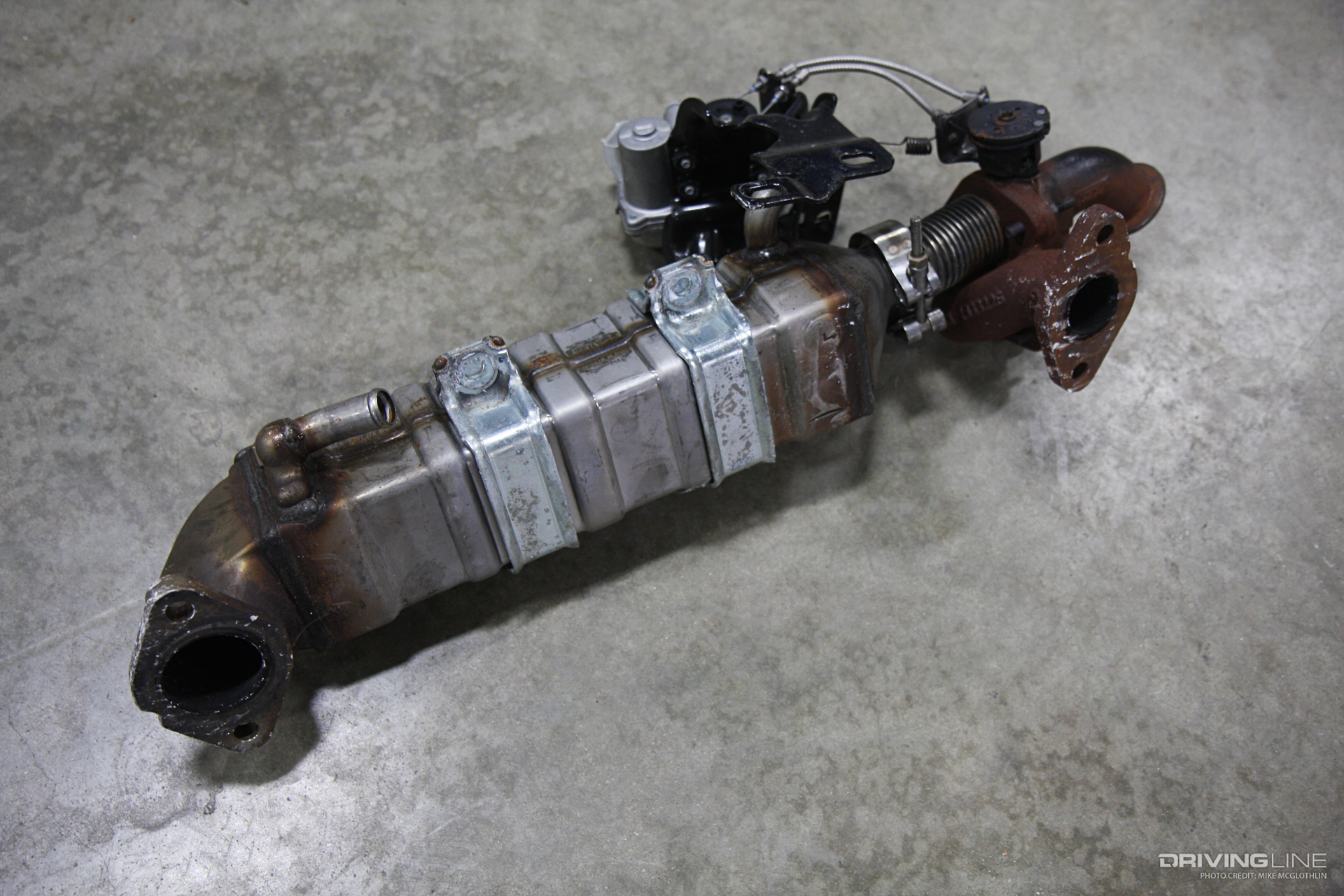
Even with EGR present, the 6.7L B-series is more than capable of making it past the 300,000-mile mark, especially if the system is properly cleaned every 67,500 miles (again, as specified by Cummins).
6.7L Power Stroke's Dual EGR Coolers
The EGR system on the 6.7L Power Stroke (’11-present) couples two floating EGR coolers into one housing.
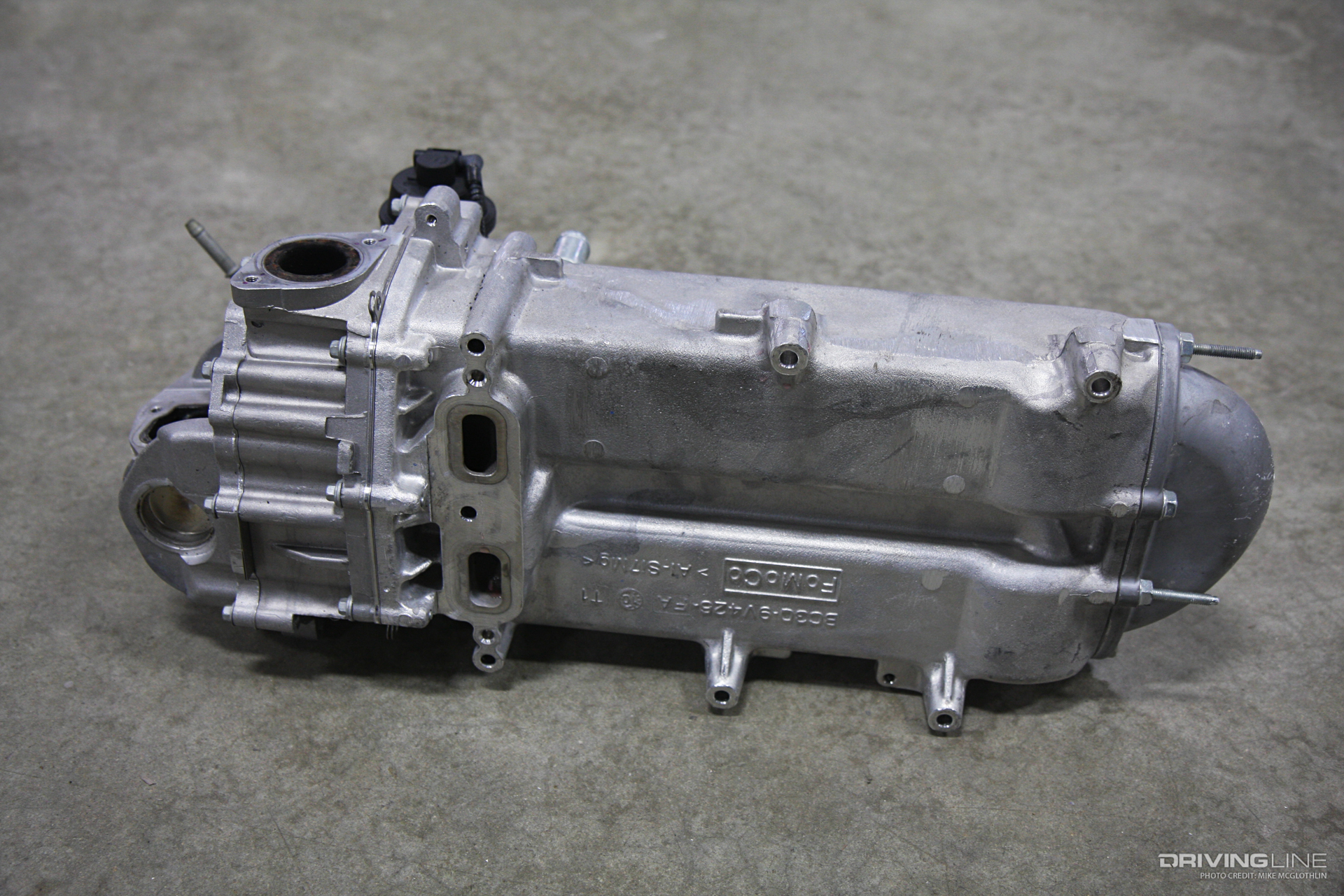
Their “floating” nature allows them to expand and contract without risk of cracking (as was the case on previous engines). Unique to this engine, the EGR system pulls gases from the passenger side exhaust manifold and sends them through a hot-side EGR valve prior to the EGR cooler. Sending uncooled exhaust gases to the EGR valve first is done to reduce (and hopefully prevent) carbon buildup in the valve, and ultimately the engine.
Intake Manifold Carbon Buildup
It’s hard to believe that this pile of carbon and grime came out of this tiny intake manifold (off of a Volkswagen Jetta TDI), but it did.

Beyond this, it’s not uncommon to find that the corresponding intake ports in the cylinder head it mates up to are half the size of their original diameter. This kills performance, fuel economy and (eventually) longevity in any diesel engine.
Keep It Clean: MAP Sensor
Intake air temperature (IAT) and manifold absolute pressure (MAP) sensors positioned downstream of exhaust-laced intake air aren’t immune from problems, either. Once they’re caked full of grime and soot, it can skew the vital information they send to the truck’s ECU, which can negatively affect engine performance and fuel economy. It’s good practice to clean your truck’s MAP sensor periodically to keep it in ideal working order.
